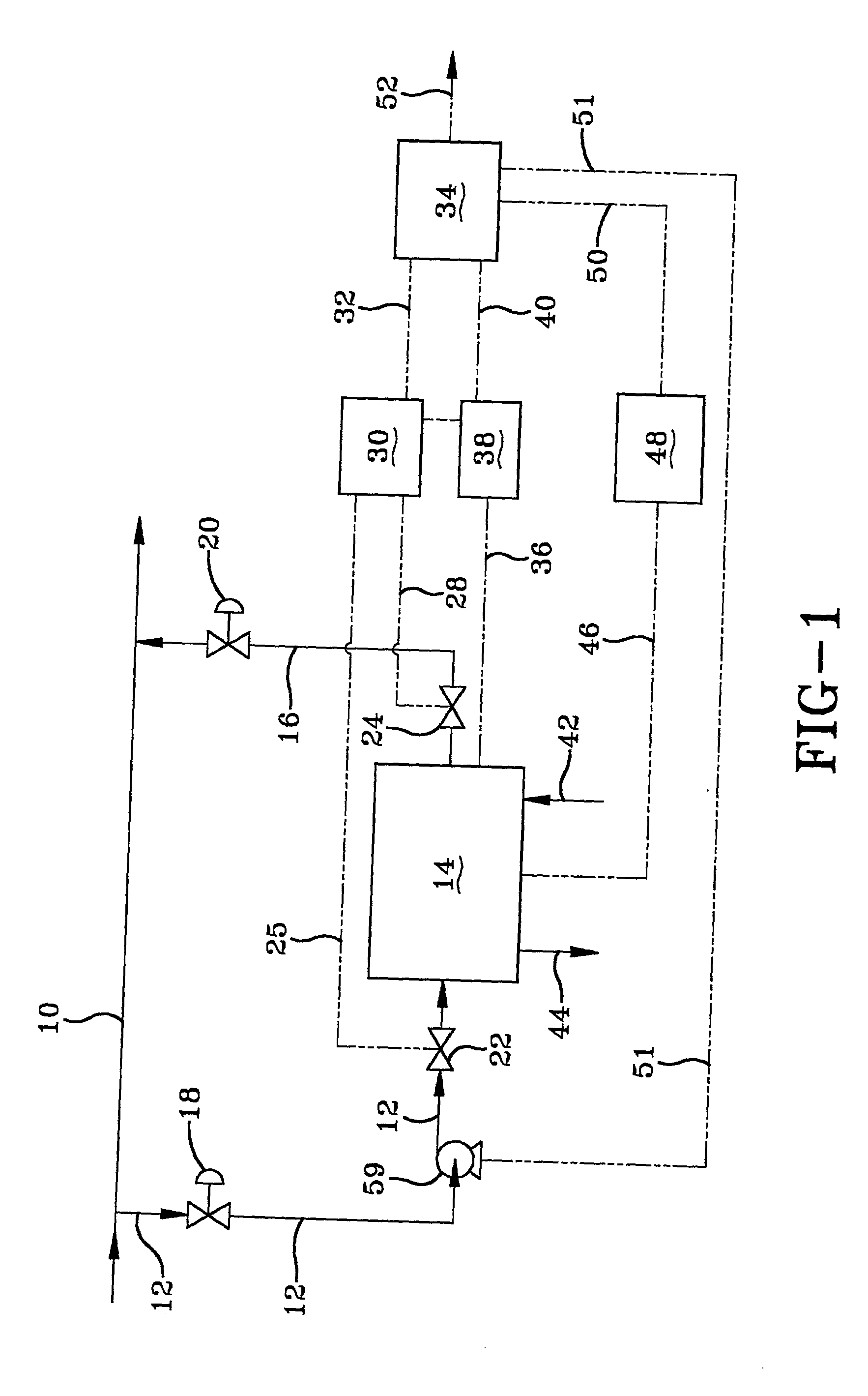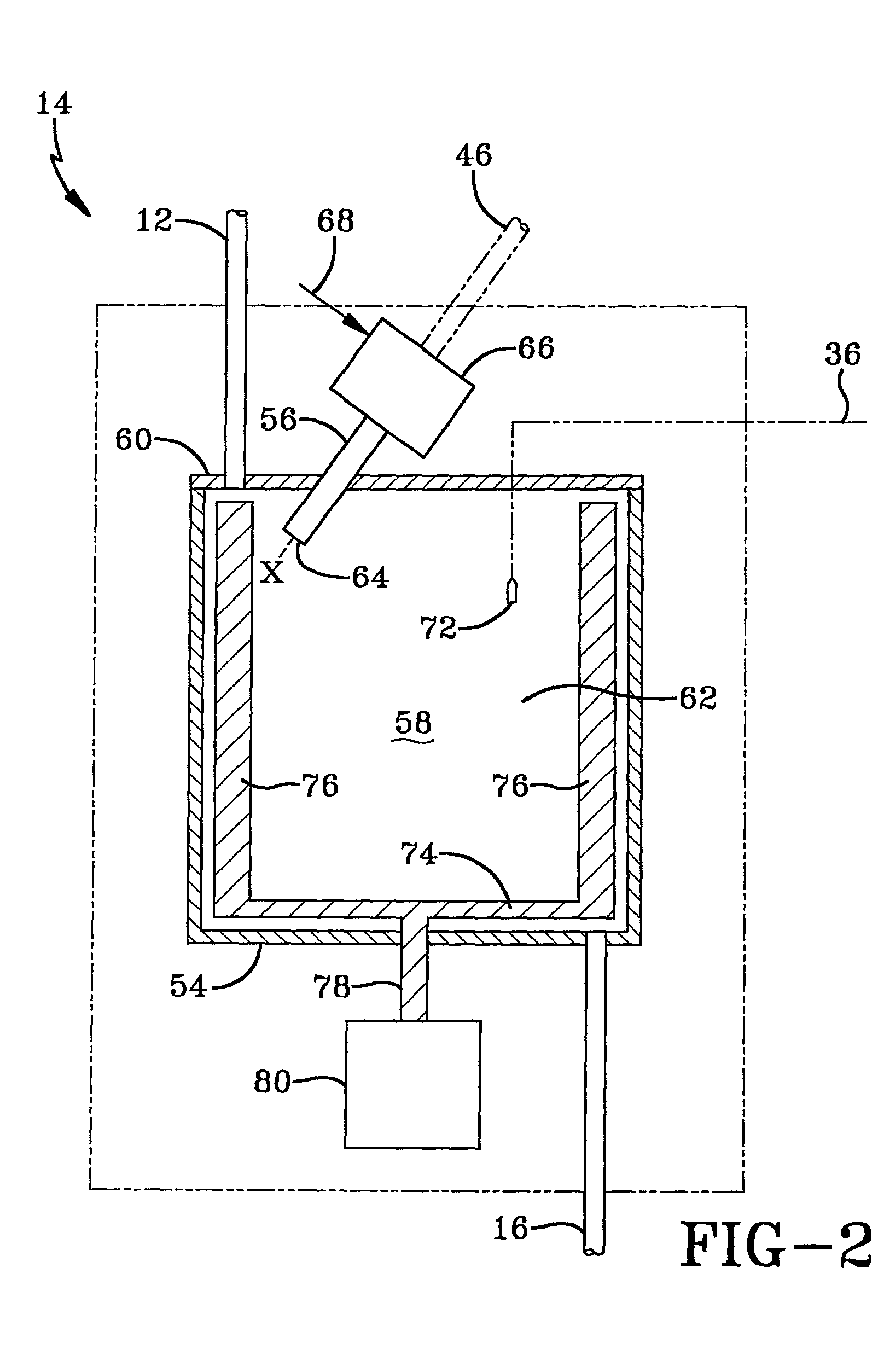On-line determination of wax crystallization temperature of waxy solvent stream
a technology of wax crystallization temperature and waxy solvent, which is applied in the direction of material crystallisation, material crystallisation, instruments, etc., can solve the problems of reducing plant capacity, affecting the operation of downstream dewaxing solvent chillers, and affecting the quality of the final produ
- Summary
- Abstract
- Description
- Claims
- Application Information
AI Technical Summary
Benefits of technology
Problems solved by technology
Method used
Image
Examples
example
[0018] Experiments were conducted with a Lasentec laser probe unit as described above. The probe was hermetically sealed in a sample chamber comprising a stainless steel jacketed vessel having about a 2200 cc liquid capacity and a variable speed mixer located in its center. Cooling was achieved by flowing cold heptane through the jacket and heating was accomplished by an electric blanket around the jacket. The probe tip extended into the vessel, such that the sapphire window at its light emitting tip was about an inch from the mixer. Prior to use the laser probe was calibrated, so that the focal point of the visible laser beam was about 100 microns past the sapphire window and into the solvent solution. The laser light was produced by a laser diode in a field unit external of the probe, with fiber optic cable coupling the diode and probe. The laser light was collimated to a beam in the probe, which was then emitted through the sapphire window, with its focal point in the solvent. Th...
PUM
 Login to View More
Login to View More Abstract
Description
Claims
Application Information
 Login to View More
Login to View More - R&D
- Intellectual Property
- Life Sciences
- Materials
- Tech Scout
- Unparalleled Data Quality
- Higher Quality Content
- 60% Fewer Hallucinations
Browse by: Latest US Patents, China's latest patents, Technical Efficacy Thesaurus, Application Domain, Technology Topic, Popular Technical Reports.
© 2025 PatSnap. All rights reserved.Legal|Privacy policy|Modern Slavery Act Transparency Statement|Sitemap|About US| Contact US: help@patsnap.com


